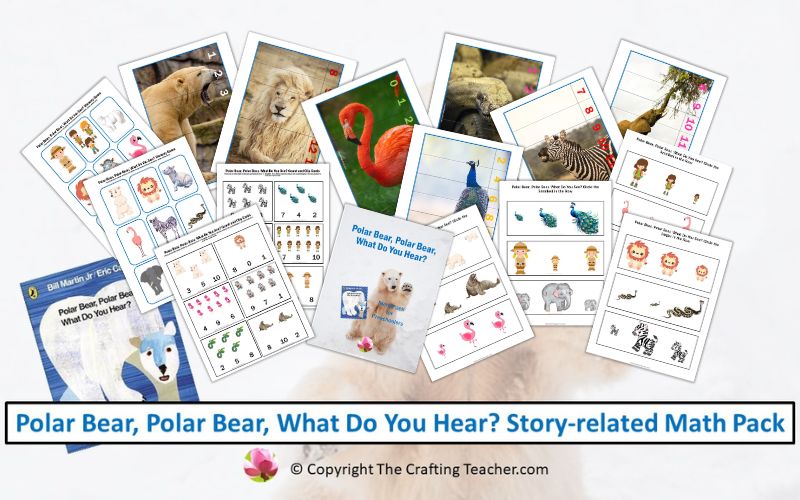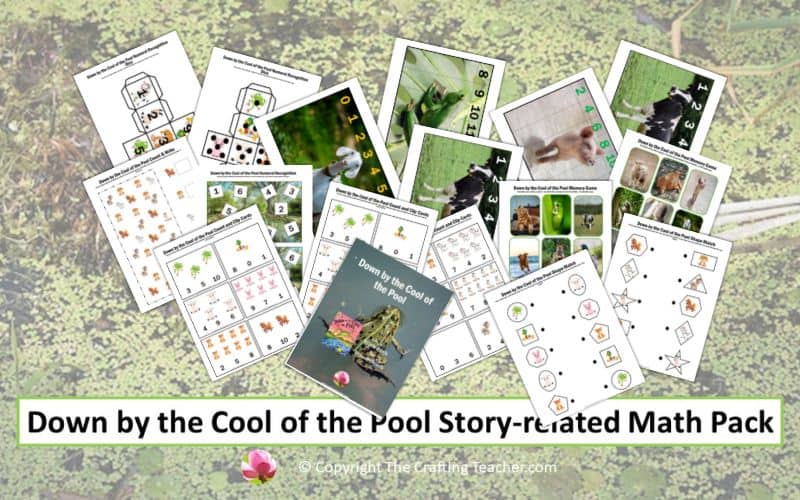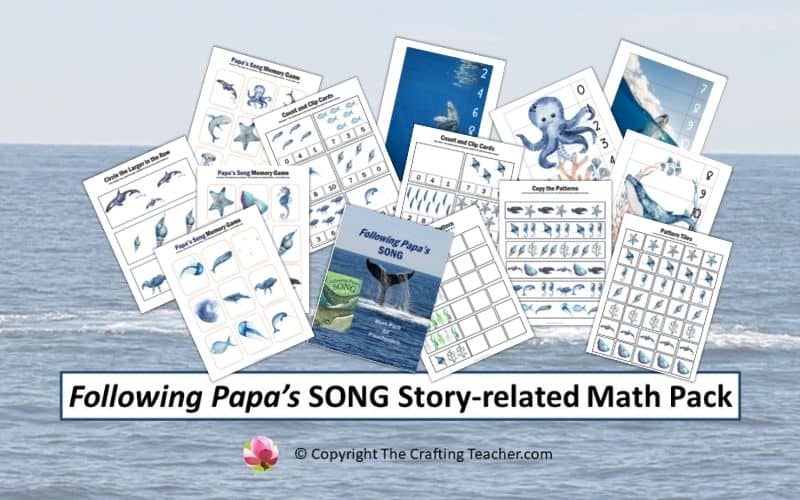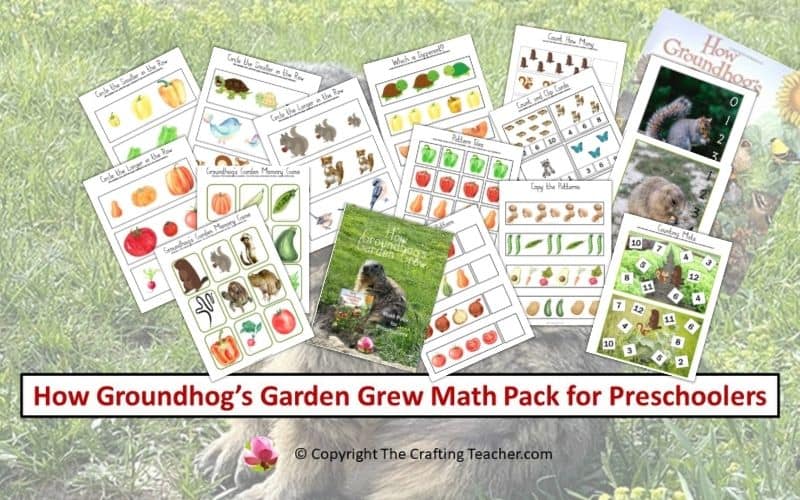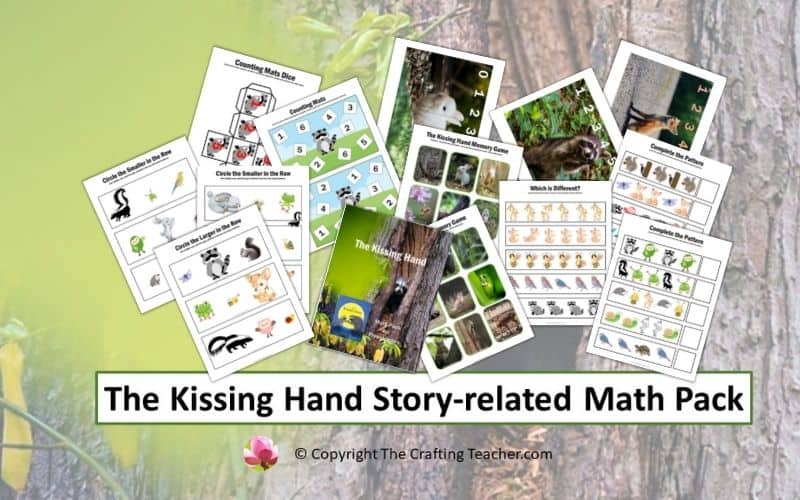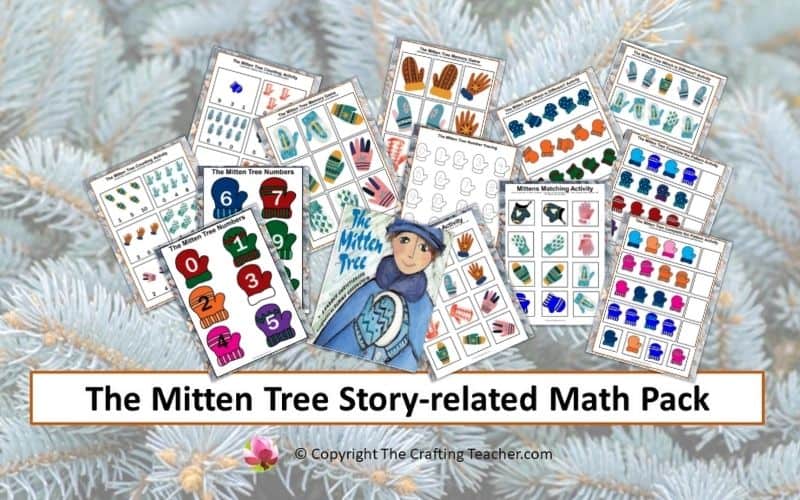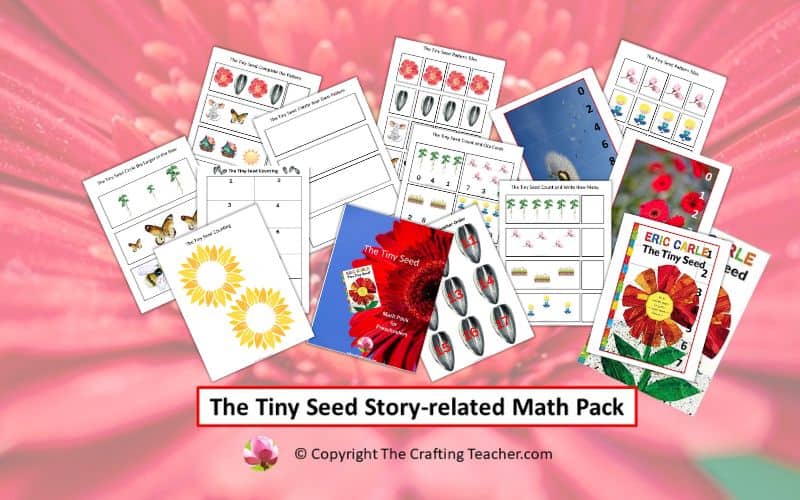Polar Bear, Polar Bear, What Do You Hear? Story-related Math Pack for Preschoolers
Affiliate Disclosure: “This post contains affiliate links, which means I receive a small commission, at no extra cost to you, if you make a purchase using those links.”
Children start exploring patterns and shapes, comparing sizes, and counting objects from one to five years old. Math also helps children make sense of the world around them, and solve problems, even when they play.
Polar Bear, Polar Bear, What Do You Hear? written by Bill Martin Jr. and Eric Carle, uses the important pre-reading concepts of rhyme, rhythm, and repetition to help children identify wild animals and the noises they make.
The animals and people featured in the book in the order of appearance are a polar bear, a lion, a hippopotamus, a flamingo, a zebra, a boa constrictor, an elephant, a leopard, a peacock, a walrus, a zoo keeper, and children.
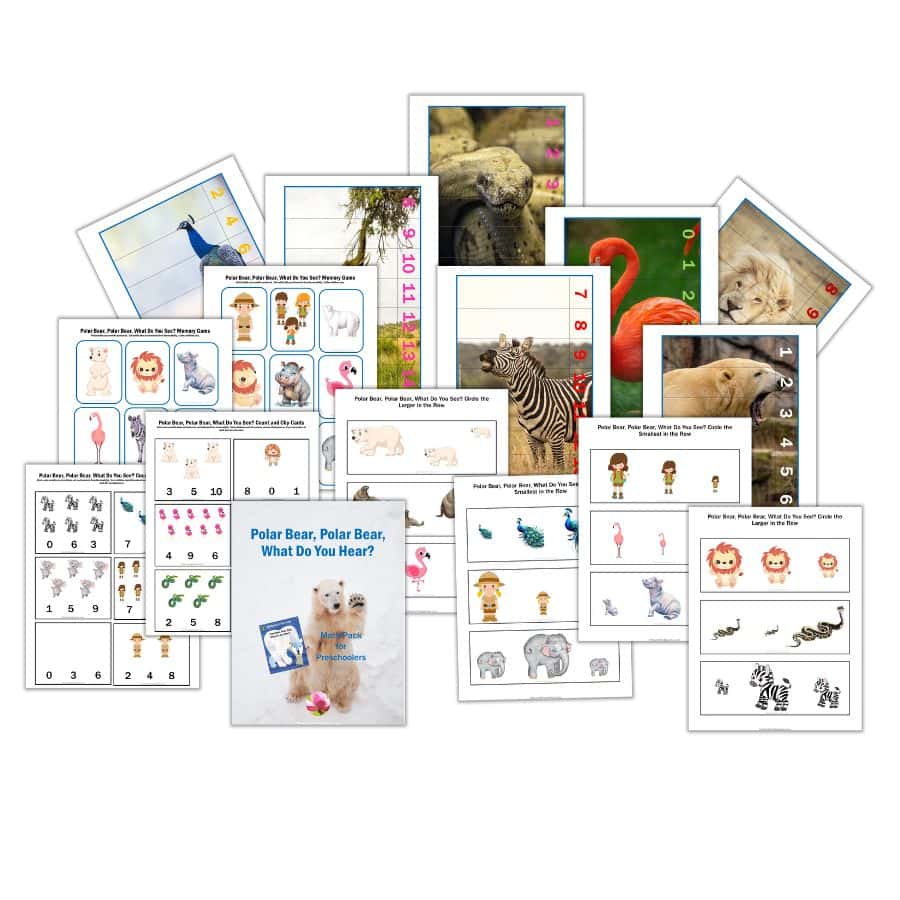
I have created a FREE 23-page Polar Bear, Polar Bear, What Do You Hear? math pack with ten different sets of activities to go along with this book, which you can download at the end of this post. In the meantime, I would like to tell you what I have included and give you some ideas of activities you can do, to take advantage of this wonderful book.
Introducing Math to Preschoolers
It is extremely important to help children build up a mathematical foundation early in life because this will allow them to understand complex mathematical concepts in the future. These math concepts should be introduced to preschoolers in a challenging way that has to be appropriate for their developmental stage.
Also, these mathematical concepts should be introduced using fun and positive experiences, to ensure their future success later in life.
Benefits of Teaching Math to Preschoolers
When you teach math to children you are helping them to develop important skills such as creative and critical thinking, problem-solving, communication, and understanding of patterns, sizes, and shapes, among other skills.
Also, mathematics gives children the ability to understand the world around them, because as I said at the beginning, math is everywhere, including in their games; therefore, preschool teachers and parents must provide opportunities for children to do meaningful mathematical activities to set up the foundation for their future, because learning Math helps children develop important skills such as:
- Creative and critical thinking skills.
- Problem solving.
- Communication.
- Understanding of patterns, sizes, and shapes.
- Ability to understand the world around them.
Polar Bear, Polar Bear, What Do You Hear? Math Activities
Every storybook allows you to do many math activities with your preschoolers. Below are some Polar Bear, Polar Bear, What Do You Hear? story-related activities I like to use. They are all included in the pack.
Count and Clip Cards
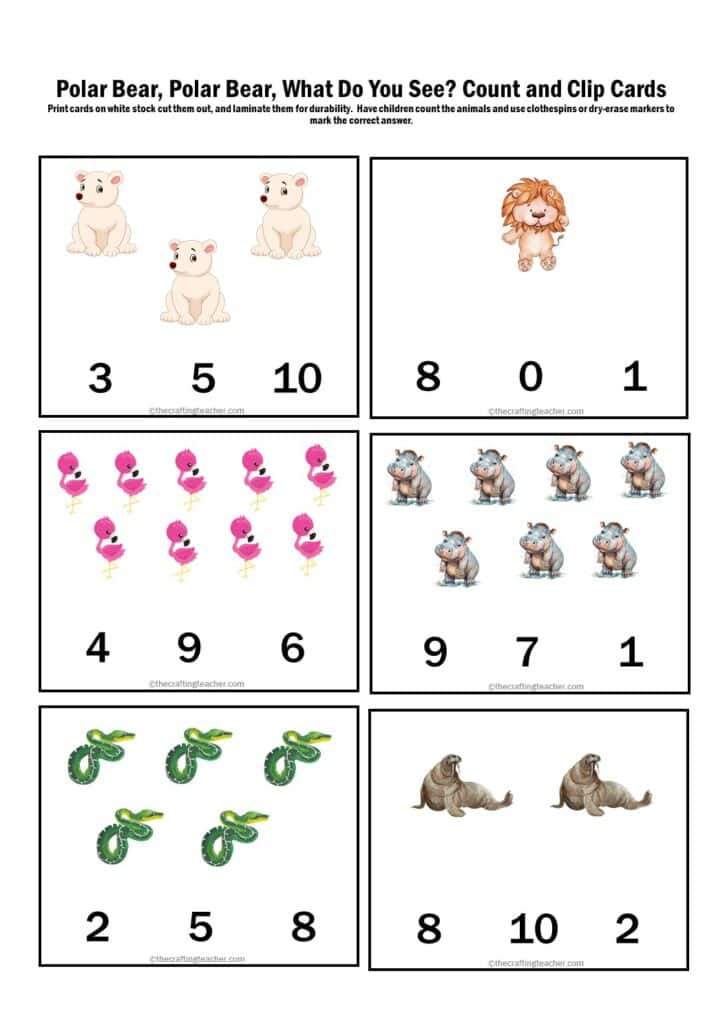
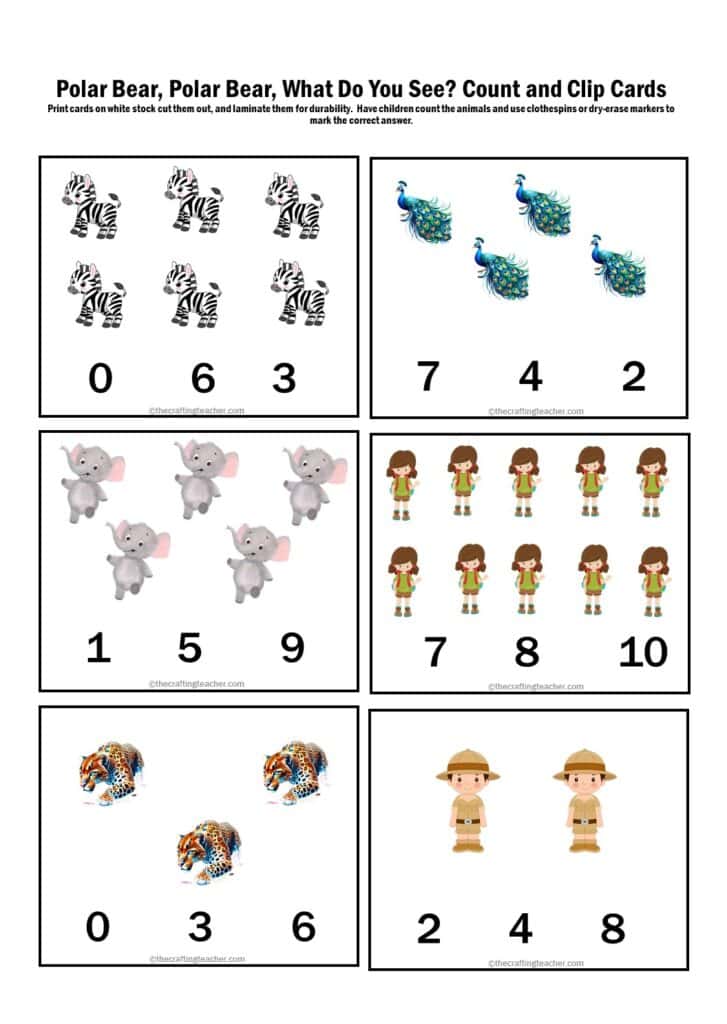
Children count the objects in each card and place a clothespin over the correct numbers. To prepare it, print the sheets in white cardstock, cut them out, and laminate them for durability.
Memory Game
This game is great to strengthen the children’s concentration, and memory and to work on one-to-one correspondence and creating sets.
This FREE printable includes two and a half sheets for a total of 24 cards, with the characters that appear in the story. Print each page twice using white cardstock. Cut out and laminate the cards to make them last longer.
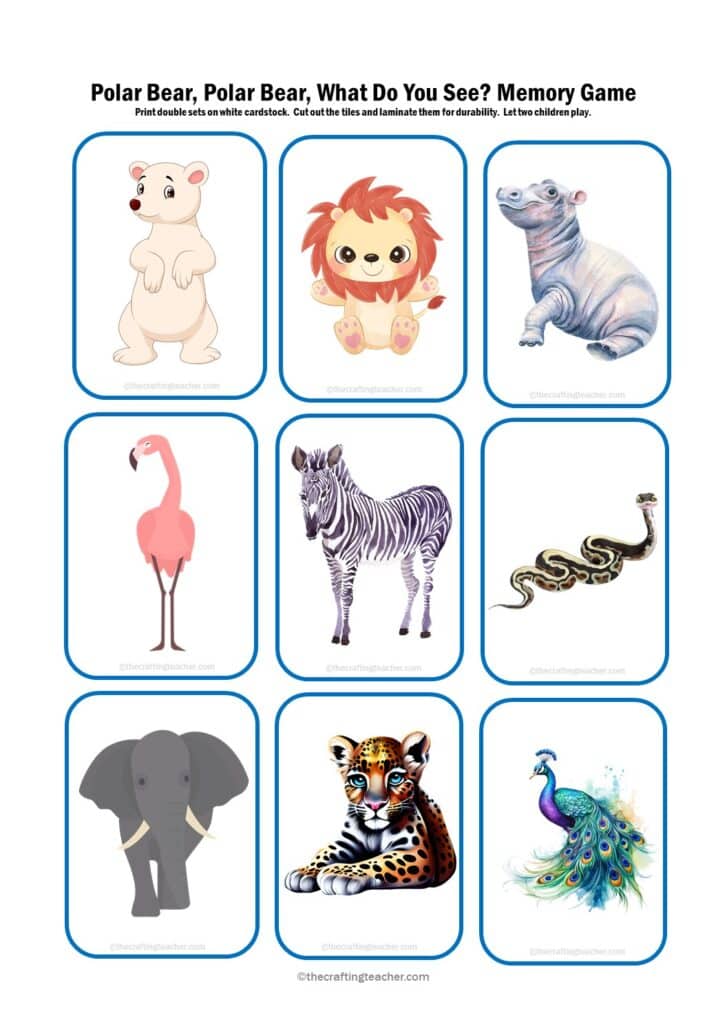
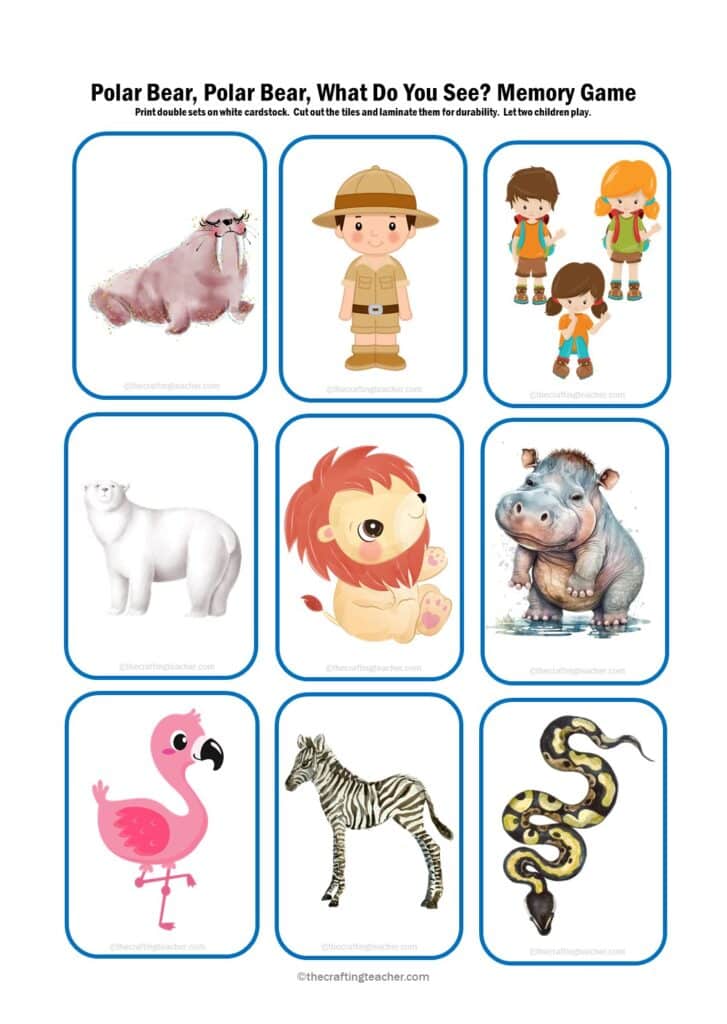
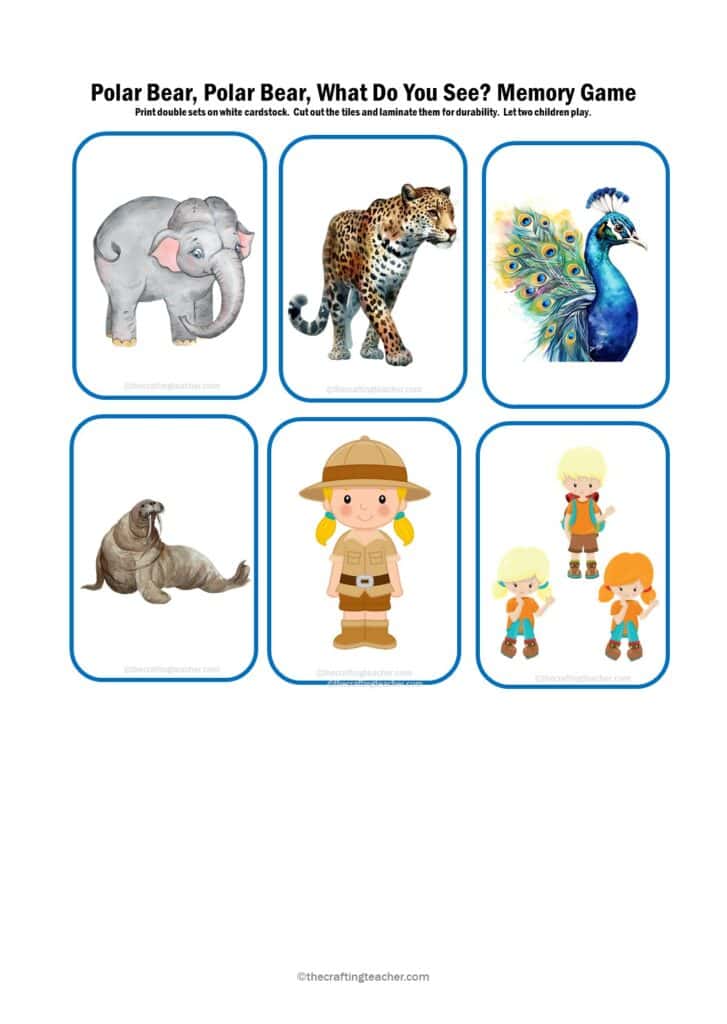
Visual Discrimination
Preschoolers must develop their visual discrimination to be able to identify and recognize similarities and differences not only in sizes, but also in shapes, letters, numbers, colors, and positions. It is an essential skill that will allow them to do important activities in life from knowing how much water a container can hold to how big of space they need to park a car.
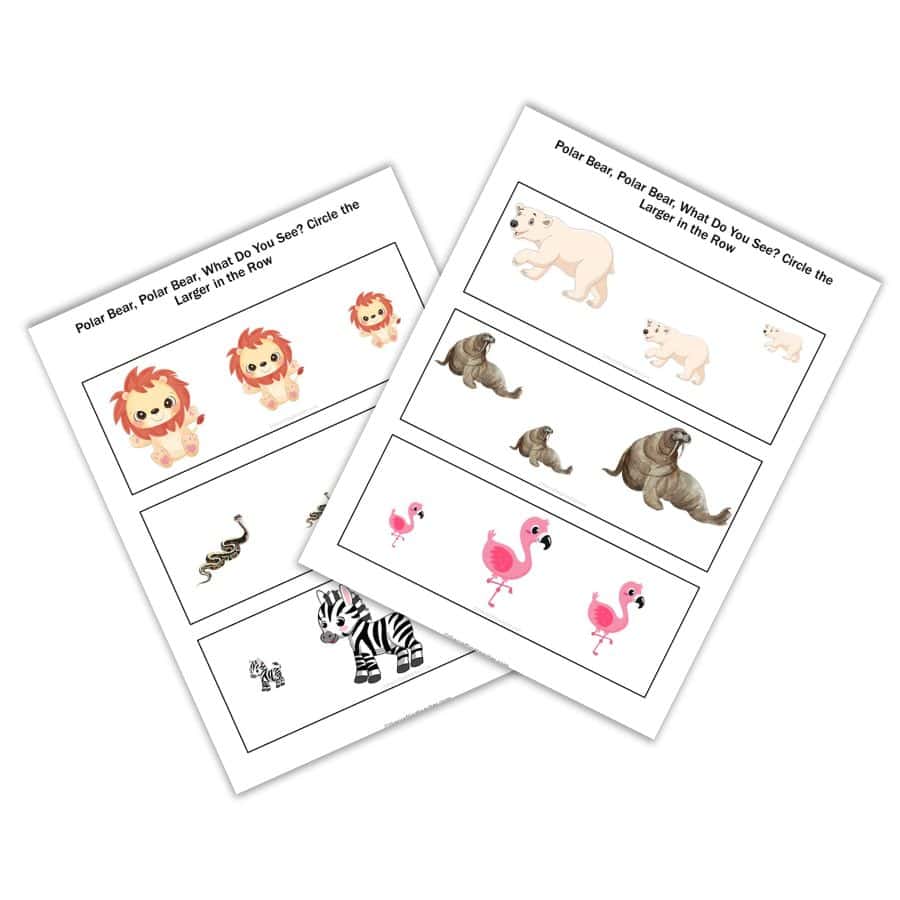
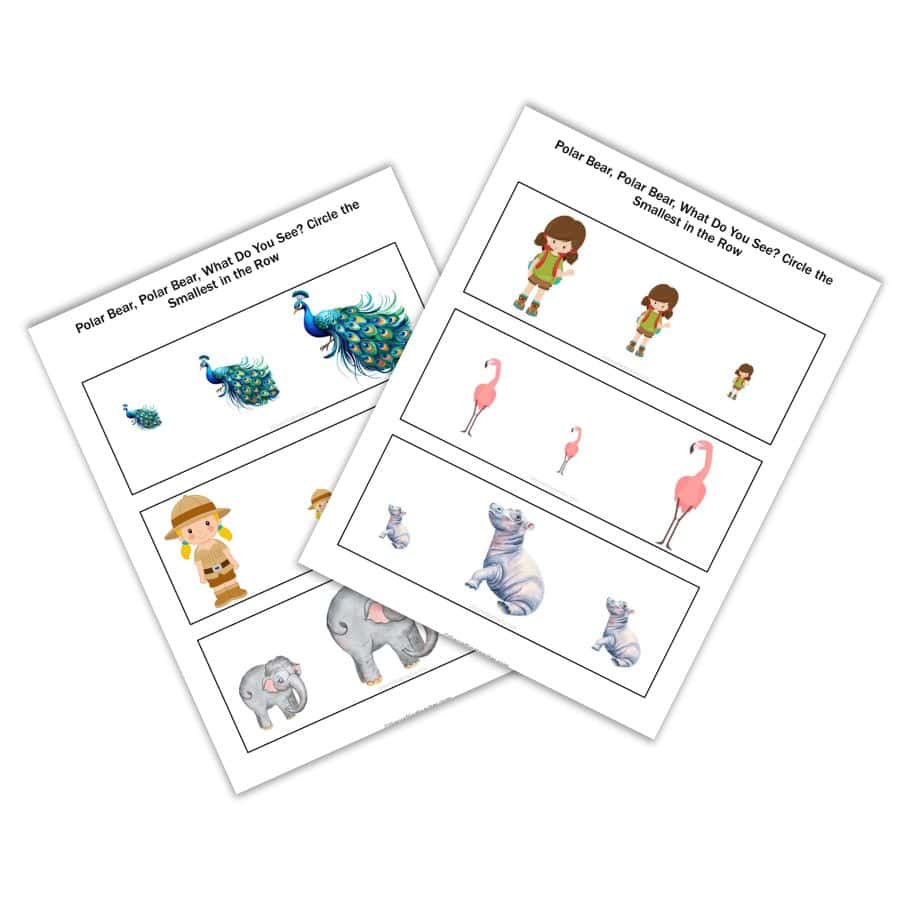
This FREE pack contains two size discrimination activities, one to circle the larger in the row, and the other one the smaller. Both activities come with two sheets with 3 strips each, featuring different animals from the story. You can either keep the sheets together or divide the strips. If you want to reuse the activity, print the sheets in white cardstock and laminate them, or use a dry-erase pocket to protect them.
Number Puzzles
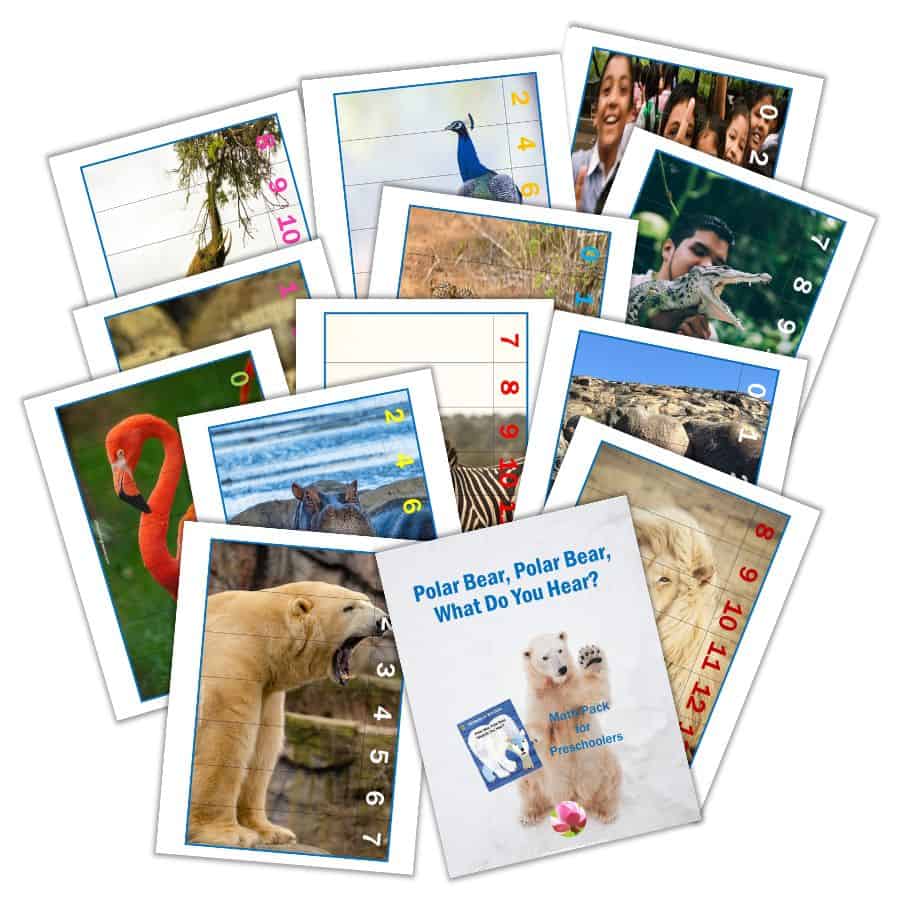
This FREE pack contains 12 sheets of puzzles with real pictures, and different number combinations.
To get them ready, just print all the pages in white cardstock, cut out the strips, and laminate them for durability.
Other Ideas
You don’t have to limit yourself to using only these printables. There are many other activities you can do related to this story as well. Some other activities I can suggest are:
- Have the children use mini plastic animals to count and take away, make sets, divide them by sizes and colors, sort the animals by type of species (birds, mammals, reptiles), and make patterns.
- Teach ordinal numbers (1st, 2nd, 3rd, etc.). As you read the book a first or second time, do a recap of the order of appearance without reading, using pictures, flannel board pieces, or toy animals. For example, the first animal is the Polar Bear, the second is the lion, the third is the hippopotamus, and so forth.
- Invite them to build using Polar Bear, Polar Bear, and What Do You Hear? magna tiles.
- Use the Polar Bear Counting & Writing Mats to practice number recognition, counting, fine, hand-eye coordination and control, concentration, one-to-one correspondence, language development, tracing, and writing abilities.
Other Polar Bear-related Books
You can always read and add more polar bear-related books to your library in other centers, to give children wide learning experiences and variety. These books could be an excellent source of knowledge. Below are some of my favorite books about polar bears. You can find these books at your local library, used book store, and on Amazon. The titles have my affiliate links, that will take you directly to the right Amazon page.
- All Things Polar Bears for Kids by Animal Reads. This colorful book, filled with captivating real-life photographs, combines fun with education to help young readers explore the world of polar bears.
- Polar Bear, Polar Bear, What Do You Hear? by Jill Martin Jr. and Eric Carle. This book uses the important pre-reading concepts of rhyme, rhythm, and repetition, to help children read by themselves.
- Are You a Polar Bear? by Andrew Gabriel. After a long slumber, a polar bear cub wakes in his den to the snowy world outside. There’s no one around, not even his mom and he can’t remember what she looks like! The little cub journeys out to find her and along the way, he meets many arctic creatures that are not like him.
- National Geographic Readers: Polar Bears by Laura Marsh. This book will help children learn about polar bears, using fascinating facts and beautiful images.
- If I Knew a Polar Bear by Karen Sutula. This is a beautifully illustrated 20-page fun poem about a polar bear and other arctic animals.
- Polar Bear Island by Lindsay Bonilla. This cute story of a bear that doesn’t want to share the island with penguins, delivers a gentle message of inclusivity.
- All About Polar Bears by EDventure Reading. This book teaches children about polar bears’ bodies, habitats, behaviors, and more through engaging text and beautiful full-color photography.
- Hush Little Polar Bear by Jeff Mack. Children follow the dream of a baby polar bear from the back of a whale to a land of tall grass, and happily right back to his bed.
- The Polar Bear’s Home by Lara Bergen. This storybook shows how global warming affects two baby polar bear cubs and their family, with tips for kids on what they can do to help slow down global warming.
You can use these ideas alone, but I will invite you to combine them with the FREE Polar Bear, Polar Bear, What Do You Hear? Literacy and Science activities I created for this story, to take advantage of more learning opportunities this book offers. Remember that you should not divorce literacy from math, science, or any other domain, to get a more comprehensive and complete educational process. They intermingle together and complement each other.
Pin It For Later
If you are in a rush and don’t have time to read the post and download the printable but want to save it for later, pin it to one of your Pinterest boards.
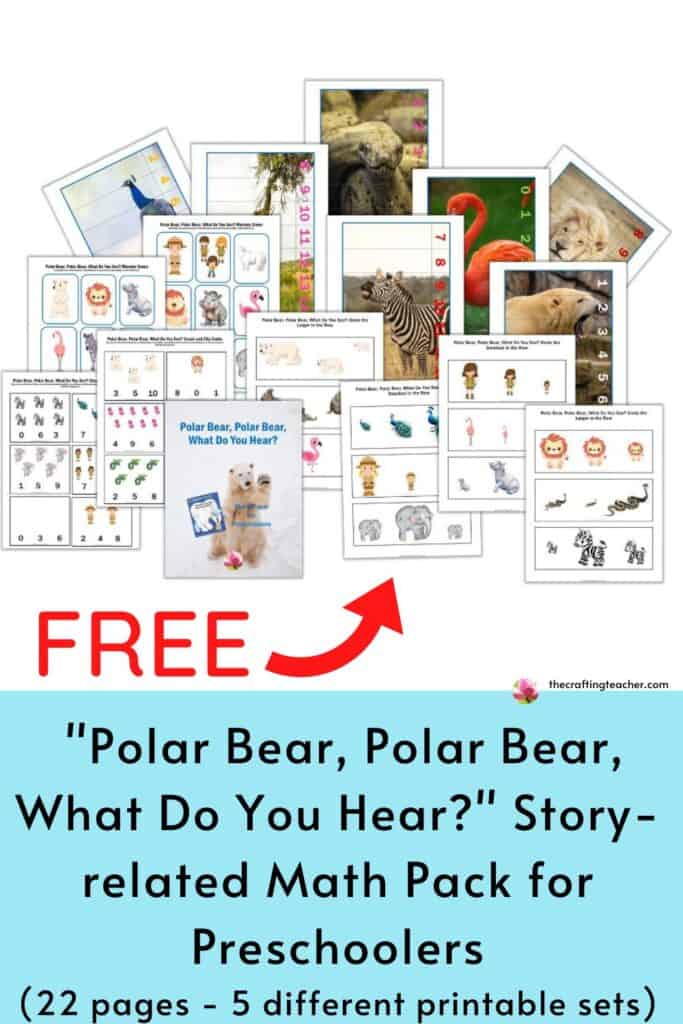
Don’t forget to download your FREE Polar Bear, Polar Bear, What Do You Hear? math pack. Just click the bottom below, and type your information, for an immediate download.
Be happy, safe, and creative. I wish you well.
Love,

P.D. Please let me know if you like any of these ideas worked for you, or if you would like to see something else as well. My goal is to help you in any way I can.

